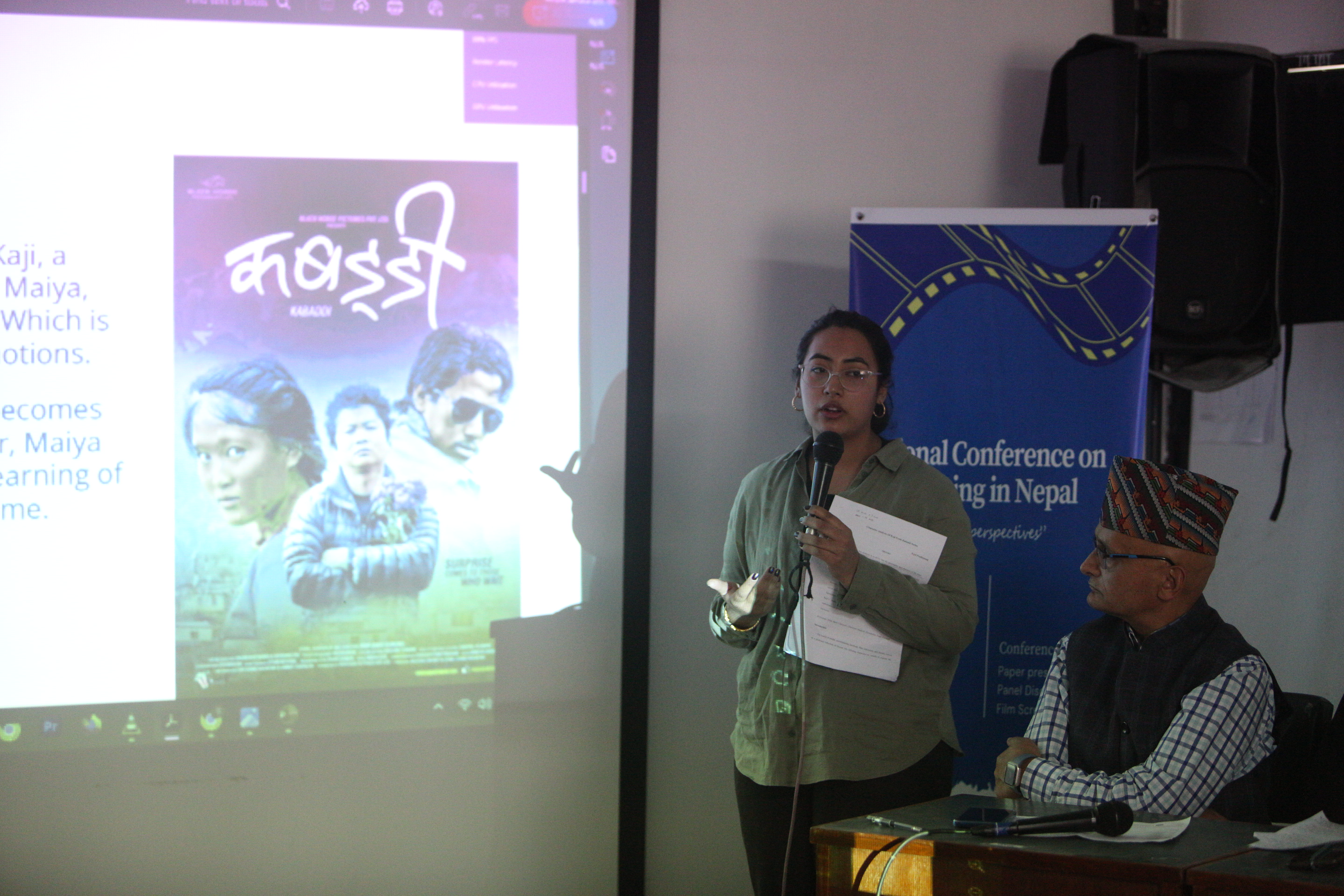
Kathmandu, April 7
To what extent is cinema a tool for social transformation and to what extent is cinema an aesthetic enterprise? Are the socially transformative and aesthetic functions of cinema mutually exclusive or complementary?
This was the topic of discussion at the National Conference on Filmmaking, organised at Kathmandu University on Thursday. The session, which delved into the intricate relationship between film, culture, and society, brought to light the untapped potential of Nepali cinema in spearheading societal transformation.
Through a series of paper presentations, experts and students of media studies underscored the urgent need for a paradigm shift in how films are conceived, produced, and perceived in Nepal.
Cinema, society and culture
Filmmaker Dipa Basnet spoke about the historical role of cinema in the transformation of society and culture. Basnet raised an important concern about the apparent need for more in-depth research throughout the creation period of Nepali films.
“The lack of scholarly attention not only lowers the quality and depth of the cinematic output but also limits cinema’s ability to depict the complexity and nuances of Nepali society correctly,” said Basnet.
She also stated that this divide limits the medium’s potential as a tool for social transformation since films fail to interact with and address the genuine challenges and dynamics of the communities they portray. Basnet focused on the importance of cinema as a tool for social transformation.
Gender biases
Film critic Urza Acharya offered a feminist critique of two mainstream Nepali films, Kabaddi Kabaddi Kabaddi and Chhakka Panja 3. Acharya spoke about the entrenched gender biases that pervade the Nepali film industry, highlighting how women in Nepali cinema are often relegated to the margins, portrayed through a male gaze that objectifies them and their roles diminished to mere side characters without significant development or agency.
“Such a portrayal not only reflects but also perpetuates societal stereotypes, undermining the potential for cinema to challenge and reshape gender norms,” said Acharya.
She further emphasised the need for Nepali cinema to move beyond traditional narratives and embrace more empowering and nuanced portrayals of different individuals and groups, including women. By doing so, Acharya said, films can contribute to the larger feminist movement, fighting for gender equality and challenging patriarchal institutions in Nepali culture.

Voyeuristic gaze
Media studies scholar Aakriti Shrestha offered a comparative analysis of two documentary films, In the Jaw of the Tiger by Herne Katha and Honey Hunter by Yes Theory, Shrestha, in examining the representation of honey-hunting tradition in Nepal, said the outsider gaze of the director and the audience provides for the objectification of the experiences of the locals.
Shrestha further stated that while the participatory approach of the director in Herne Katha creates a sense of intimacy with the subjects of the documentary, the comparatively distanced approach taken in Honey Hunter creates a barrier between subjects and the audience that precludes any possibility of intimacy between them. Put side by side, the films provide a different perspective for understanding the documentary film genre from the perspective of the external gaze.
Contemporary Nepali cinema
Media researcher Sejol Pradhananga offered an in-depth analysis of the character Kaji across the Kabaddi series. Pradhananga examined the character’s role within the social dynamics, noting his persistent efforts to win over his love interest, Maiya, and his emotional journey marked by jealousy and anger. Despite the changing social milieu, Pradhananga said Kaji’s character remains static in terms of physical appearance and social status, with minor wardrobe adjustments reflecting his ageing from 32 to 39. Kaji’s hostility towards other characters and resistance to change were highlighted as key personality traits. His sole goal throughout the series is the pursuit of the female lead, leading to a conflict between him and another character.
In a comparative study, media researcher Sandesh Chauhan discussed the visual aspects of the Oscar-nominated film Green Book and Nepal’s official entry for the Oscars, Bulbul. The analysis centred on the correlation between budget and quality, technical and visual differences, and the use of camera angles, mood, and composition in cinematography to create visual space.


















